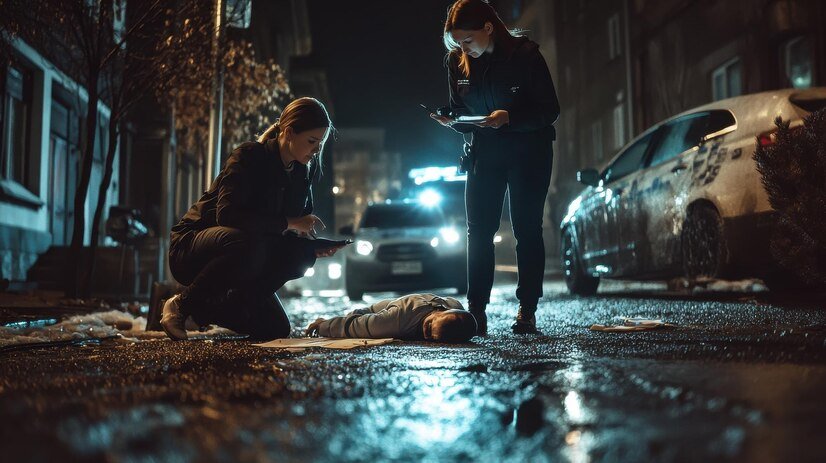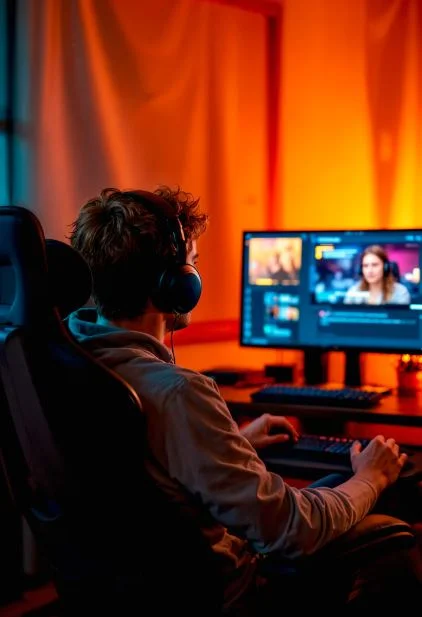The Importance of Gathering Evidence at the Accident Scene
Imagine you’re driving down the road — minding your own business when suddenly another car hits yours. Your heart’s pounding, shaken up, and everything’s a mess. In the chaos of the moment, everyone thinks about what to do next.
But the actions you take in those crucial moments after the accident can impact the outcome of your case.
This blog will guide you to understand the importance of evidence at the accident scene and help you to take the right steps to protect your rights and interests.
So, let’s get started.
Why Does Evidence Matter After an accident?
Evidence is like your secret weapon in legal battles. Without it, your case is built on shaky ground, leaving you open to attacks from the other side or their insurance company. It shows exactly how the accident happened and who’s responsible.
Things like photos of the scene, what witnesses saw, and even tire marks on the road can all help figure out who’s to blame. Also, medical bills, repair estimates, and photos of your injuries all provide concrete evidence of the damages you suffered.
This is key to getting the compensation you deserve for medical costs, lost income, and the pain and suffering you endured. Sometimes the other side might try to downplay what happened or even blame you. Solid evidence can shut down those claims and protect you.
Gathering evidence at the scene isn’t just about the legal stuff — it’s about giving yourself the best shot at a fair resolution.
Types of Evidence to Collect
Here’s a breakdown of the key types of evidence to collect at the accident scene.
Photos and Videos
A picture’s worth a thousand words, and after a car accident in Minnesota, it could be worth a lot more than that. Use your smartphone or any available camera to document the scene from various angles.
Capture images of.
- Take pictures of all the vehicles involved in the accident. Get close-ups of any dents, scratches, or broken parts.
- Also, take pictures of any skid marks or debris on the road.
- Include traffic lights, signs, and the overall condition of the road in your photos.
- Don’t forget to take pictures of your injuries and any damage to your belongings.
If you can, record a video of the whole scene to give a better idea of what happened. The more pictures and videos you have, the stronger your case will be.
Contact Information
Swap contact details with the other driver. But also, try to get the names and numbers of anyone who saw the crash happen. What they saw can really help back up your side of the story.
People Who Saw it Happen
People who saw the accident can tell you important things about what happened before and during the crash. If you can, ask them to write down a quick summary or record them talking about it on your phone. Make sure you get their contact info in case you or your lawyer need to talk to them again.
Things Left at the Scene
If there are any broken car parts or your stuff got damaged and it’s safe to do so, try to keep those things. These items might help show the extent of the impact and damage caused by the accident. Remember to take pictures of these items at the scene as well, in case you can’t safely collect them. They can be important proof later on.
How to Gather Evidence Effectively
It’s important to stay calm and organized when gathering evidence at an accident scene. Here are some tips to help you do it effectively.
Prioritize Safety
Before you start gathering evidence, make sure you and others involved are safe. If anyone is injured, call for medical assistance immediately. Move to a safe location away from traffic if possible.
Remain Calm and Collected
Accidents are stressful but try to stay as calm as possible. Resources say take a few deep breaths and focus on the task at hand. remember that getting the facts is important for you.
Document Everything
Even if something seems minor or insignificant, document it. Take photos, videos, and detailed notes. Write down the names and badge numbers of any responding officers. The more information you gather, the better.
Be Respectful and Polite
Talk to the other people involved and any witnesses politely. Avoid arguing or assigning blame. Focus on gathering information and cooperating with the police.
Mistakes to Avoid
In the heat of the moment, it’s easy to make mistakes that could jeopardize your claim. Here are a few common pitfalls to avoid.
Admitting Fault
Even a casual apology or a statement like, “I didn’t see you” can be interpreted as an admission of fault. Stick to the facts and avoid making any statements that could be used against you later.
Leaving the Scene
Never leave the scene of an accident before the police arrive and complete their investigation. Doing so can result in criminal charges and significantly weaken your legal position. Stay at the scene, even if the accident seems minor. It’s your legal and ethical responsibility to cooperate with the authorities and ensure everyone’s safety.
Put Your Health First
Even if you feel fine, it’s crucial to seek medical attention after an accident. Some injuries may not be immediately apparent, and a medical report can serve as valuable evidence.
Don’t Let Details Fade
It’s easy to forget things after something scary happens. Don’t just rely on your memory about the accident. Write everything down or take pictures and videos as soon as you can while you still remember clearly.
Read Also: Hallandale Beach Injury Lawyer Consultation
Conclusion
Gathering evidence at the accident scene is not just a legal formality. It’s a crucial step in protecting your rights and ensuring you receive fair compensation for your injuries and losses.
And if you’ve been involved in an accident, don’t hesitate to seek professional legal advice. A Minnesota car accident lawyer can guide you through the process, help you understand your rights, and ensure you receive the justice you deserve.






